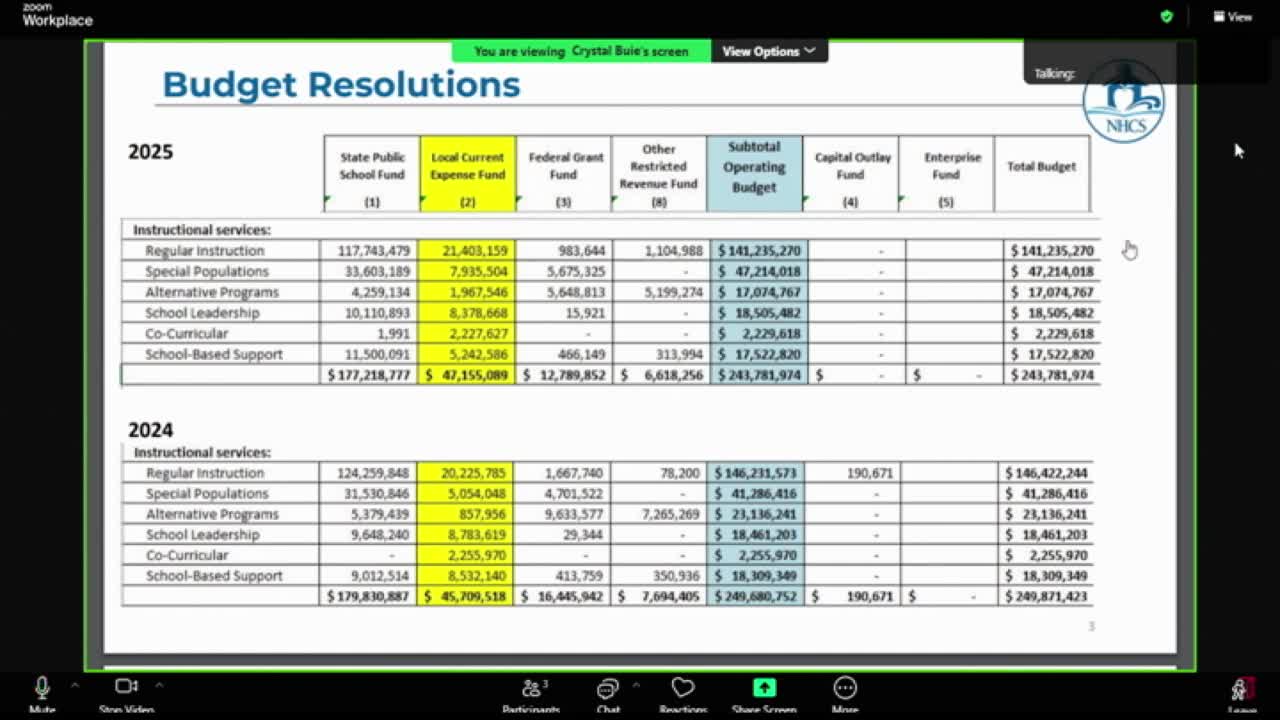School Funding Crisis Exposed Amid Charter School Payments
June 27, 2024 | New Hanover County Schools, School Districts, North Carolina

This article was created by AI summarizing key points discussed. AI makes mistakes, so for full details and context, please refer to the video of the full meeting. Please report any errors so we can fix them. Report an error »

During a recent government meeting, officials discussed the intricacies of the local current expense fund, which is deemed the most flexible source of funding for public schools. The meeting highlighted the various funding sources, including state public school funds, local current expenses, federal grants, and other restricted revenue, with a particular focus on the local current expense fund due to its flexibility in spending.
The discussion revealed that the local current expense fund allows for more discretion in budget allocation compared to state and federal funds, which come with specific spending requirements. Officials noted that the budget for the upcoming year remains largely unchanged from the previous year, with a total budget of approximately $89 million, excluding charter school payments.
A significant portion of the conversation centered around the financial implications of charter school funding. Board members expressed concerns about the $7 million allocated to charter schools, emphasizing that these funds could otherwise support traditional public schools. The board highlighted the lack of accountability and testing requirements for charter schools, raising questions about the fairness of funding public charter institutions that do not adhere to the same regulations as traditional public schools.
Officials clarified that the county is legally obligated to fund charter schools, which has become a contentious issue as it diverts resources from the public school system. The recent changes in state funding policies, which now allow virtual charter schools to receive the same reimbursement as traditional charter schools, were also discussed, further complicating the financial landscape for public education.
The meeting concluded with a call for greater public awareness regarding the financial challenges posed by charter school funding, as board members emphasized the need for advocacy for traditional public schools and their students.
The discussion revealed that the local current expense fund allows for more discretion in budget allocation compared to state and federal funds, which come with specific spending requirements. Officials noted that the budget for the upcoming year remains largely unchanged from the previous year, with a total budget of approximately $89 million, excluding charter school payments.
A significant portion of the conversation centered around the financial implications of charter school funding. Board members expressed concerns about the $7 million allocated to charter schools, emphasizing that these funds could otherwise support traditional public schools. The board highlighted the lack of accountability and testing requirements for charter schools, raising questions about the fairness of funding public charter institutions that do not adhere to the same regulations as traditional public schools.
Officials clarified that the county is legally obligated to fund charter schools, which has become a contentious issue as it diverts resources from the public school system. The recent changes in state funding policies, which now allow virtual charter schools to receive the same reimbursement as traditional charter schools, were also discussed, further complicating the financial landscape for public education.
The meeting concluded with a call for greater public awareness regarding the financial challenges posed by charter school funding, as board members emphasized the need for advocacy for traditional public schools and their students.
View full meeting
This article is based on a recent meeting—watch the full video and explore the complete transcript for deeper insights into the discussion.
View full meeting
